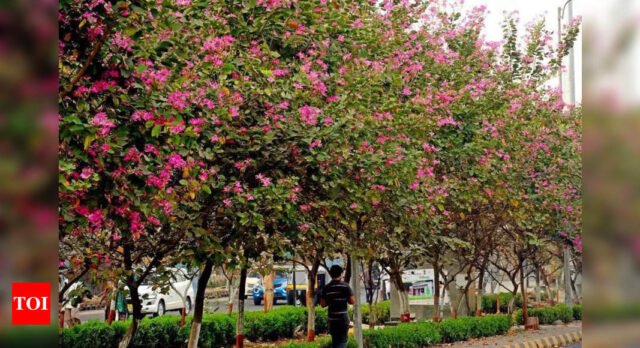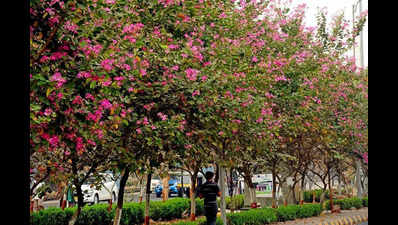Hyderabad: Amid rising vehicular and industrial pollution in the city, a study by the Institute of Forest Biodiversity, Hyderabad, has found that certain tree species can capture dust and are tolerant to suspended particulates. The study, led by two professors at the institute, identified the Ficus benghalensis (banyan) as the most effective species for air pollution control, acting as a keystone species. Other species such as Azadirachta indica (neem) and Bauhinia purpurea (orchid tree) also play a significant role in reducing pollutant levels in various locations.
The study, led by two professors — Pankaj Singh, scientist-D (group coordinator – reasearch) and Bharati Patel, scientist-C (forest ecology & climate change) at the institute, identified the Ficus benghalensis (banyan) as the most effective species for air pollution control, acting as a keystone species. Other species such as Azadirachta indica (neem) and Bauhinia purpurea (orchid tree) also play a significant role in reducing pollutant levels in various locations.
Urban vegetation and tree cover are essential in mitigating the effects of summer heatwaves, soil contamination, air and water pollution, and noise. Air pollutants can cause visible damage to leaves, disrupt physiological processes like photosynthesis and carbon sequestration, and reduce the growth and vitality of plants, making them more susceptible to abiotic and biotic stress.
For this study, samples were collected from three locations in the city: Dulapally, the Bollaram Industrial Development Area (IDA), and Tukkuguda along the Medchal National Highway (NH44). These areas are home to various pharmaceutical, concrete, and beverage industries, hence heavily impacted by industrial emissions and vehicular pollution, which likely contribute to higher pollutant levels.
Bharati Patel, scientist-C (forest ecology & climate change) at the Institute of Forest Biodiversity, noted that the analysis of biochemical parameters in five species revealed that Azadirachta indica, Bauhinia purpurea, and Ficus benghalensis are well-suited for avenue plantations in industrial areas and along national highways to mitigate pollution from industrial effluents and vehicle emissions.
“These species can be effectively used for green belt development in industrial areas and along NH-44 to combat air pollution,” said Bharati. “Incorporating these plants into green belt designs will contribute to long-term air pollution management in industrial zones and along major highways.”









